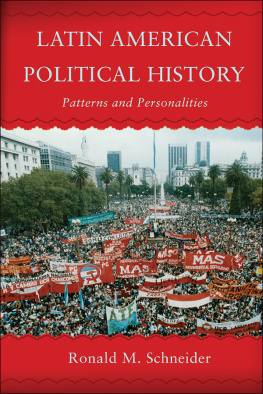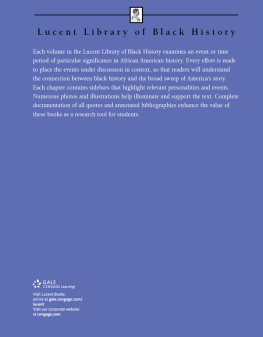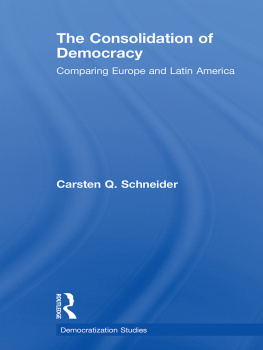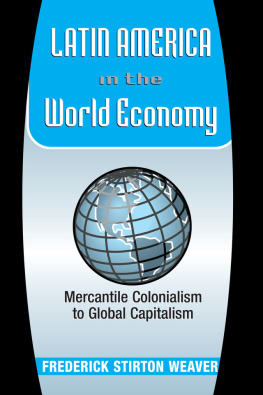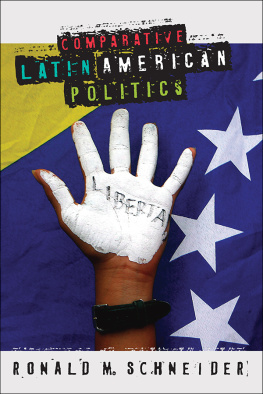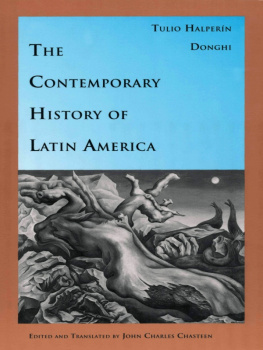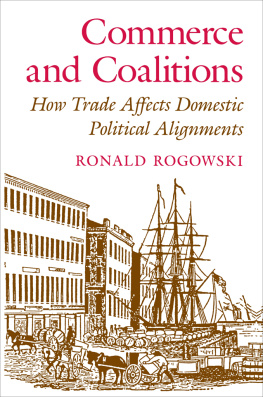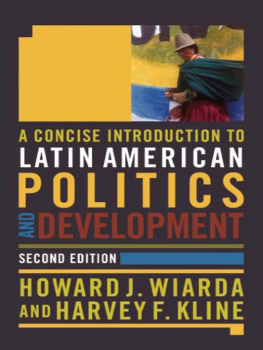Latin America, embracing the diverse array of countries lying south of the United States in the Western Hemisphere, is both a major part of the world and its richest laboratory for understanding the processes of political development and their interaction with economic growth, societal modernization, and cultural influences. Its vast expanse stretches north to south for seven thousand miles from the border between Mexicos Baja California and the most populous state of the United States, Californiaacquired from Mexico by force over a century and a half agoto the southernmost tip of Argentina, only a short distance from Antarctica. Since much of the region is farther from the eastern United States than is most of Europe, only a relatively small portion fits the lingering stereotype of being the backyard of the US colossus. Moreover, from that same point south of San Diego to the easternmost bulge of Brazil, Latin America extends more than fifty-five hundred miles from east to westnearly double the width of the hemispheres hegemonic power and current world paramount.
Latin Americas more than eight million square miles of land is divided into thirty-four sovereign political entities plus a handful of vestigial colonial areas (by far the largest and most populous of which is Puerto Rico). The regions differences are so great as to raise the question of whether it has any other than geographical meaning, but the term Latin America is firmly rooted in popular usage and embedded in the organization and operations of governments, businesses, and academic institutions. Hence it is much more productive to give it deeper and sharper meaning than to quibble over its appropriateness. When the term is accurately employed, Latin America includes not only all the South American continent, but also Central America and the Caribbean, as well as Mexico.
The diversity among its constituent countries is striking in manifold respects: size, population, ethnic makeup, geography, resources, level of economic development, and societal dynamics, as well as political development. Even with respect to language Latin America is far from homogeneous: Although it is often misleadingly referred to as Hispanic America, nearly a third of its inhabitants speak Portuguese, Haiti is French-speaking, much of the Caribbean is English-speaking, and millions still know only the indigenous languages of their ancestors. And although Catholicism is by far the predominant religion, there are tens of millions of Protestants and other tens of millions adhering to religions brought over from Africa or practiced in the hemisphere before the arrival of European colonizers. Not surprisingly, but very harmfully, lack of understanding and prevalent misconceptions characterize the fragmented and superficial image of Latin America prevailing in the United States and the rest of the world.
Although the principal focus of this book is comparisons within Latin America, an underlying goal is to bring this regions rich experience into the mainstream of politics and government at the global level. The urgency and timeliness of this task is underscored by the all-too-obvious fact that failures in the realm of political development, particularly of a democratic bent, have been predominant in Africa as well as on most of the Asian continent from the Near East across to Southeast Asia. As a result, the possibility of stable democratic outcomes in such countries has been called into question. In my view as an empirical comparativist with a strongly historical perspective, this pessimism is prematurevery possibly by generations rather than just decadessince the democratization of Latin America required over a century and a half.
Many arguments can be made concerning why the several centuries required to achieve stable, representative, constitutional political systems in Western Europe and English-speaking North America should not be necessary for countries whose independence postdates World War II. But propositions concerning rapid political development prove unconvincing when viewed in light of the experience of Latin America, which shares with these fledgling nations much of the same tradition of colonialism with its externally imposed governmental and political structures as well as economic subordination. Although substantial, the time gap between the independence of Latin American countriestypically in the 1820sand that of the Afro-Asian world, often in the 1950s and 1960s, is significantly less than that between the Afro-Asian world and the emergence of European nation-states in the sixteenth and seventeenth centuries. Hence, a close examination of Latin Americas struggles to establish viable participatory political systems provides the most realistic and appropriate yardstick against which to measure the progress (or lack thereof) in this direction by the globes new nations. Indeed, what has been accomplished in the real world is the only valid and meaningful standard against which to assess what people are striving to achieve at present. Yet there is a prevalent tendency to substitute for it some empirically groundless concept of what should be possible, rooted in little more than the observers personal impatience to see results during the short span he or she might be around to coach and criticize. Latin Americas experience confirms the harsh reality that both political institutions and their requisite congruent political culture are built over generations. Even decades prove time and again to be far too brief for measuring fundamental trends as opposed to mere political fads, fancies, and fashions.
Realistically, a significant permanent expansion of democratic political development in Africa and most of Asia probably remains well in the future. How far in the future is a question social scientists are not yet equipped to answer. Lacking adequate conceptual tools for this task, we must fall back upon the old mainstay of relevant comparative experience. Until we have a deeper understanding of democratization in other regions, concentration upon the criteria and dimensions of relevance is prematurea case of putting the cart before the horse. Since by far the greatest number of recent cases of successful democratization are found in Latin America, this region most urgently requires thoughtful comparative study. Indeed, a major aim of this book is to identify, analyze, and highlight the salient lessons for the current new nations of the Afro-Asian world in Latin American experience. In this regard, the 18201930 span is more relevant in many respects than recent times, since that is when the countries analyzed here were coping with the array of post-independence problems and challenges of national consolidation that still plague over half the nations of the world.


